My #1 Villa Tugendhat Trick that Always Gets a Tour Slot
Blame it on my inadequate research: I had little idea what Villa Tugendhat in Brno was about until the day I arrived in town. I read a tourist brochure and learnt that it’s an icon of modernist architecture, the work of Ludwig Mies van der Rohe. Yes, the guy who famously said, “less is more.”
To make my fail even more spectacular, it’s also the city’s only UNESCO World Heritage Site. How could I visit the Rietveld-Schröder House and then miss this?
History of the house
In 1929, the Jewish textile magnate Fritz Tugendhat and his wife Grete commissioned Mies to build their family home on a plot that Grete’s father gifted her on their wedding. Mrs Tugendhat was familiar with the German architect from previous meetings, and for villa Tugendhat Mies van der Rohe built her vision of a spacious, functional house that comprised clean and simple lines. It cost five million Czech crowns, 15 times more than a typical villa in 1930.
When the Nazis annexed parts of Czechoslovakia in 1939, the Tugendhat family made the painful decision to leave the country and never moved back into their home. For a time after World War II, it was used as a physiotherapy centre of a nearby children’s hospital. Grete returned in 1967, now widowed, to explain how the house used to look to architects who wanted to save the damaged building.
Villa Tugendhat was the scene of a historic event in 1992: Vladimír Mečiar and Václav Klaus negotiated and signed the dissolution of Czechoslovakia into the Czech Republic and Slovakia in the garden. The house was opened to the public as a museum in 1994; following more repairs to restore it to its former glory, it was reopened in 2012.
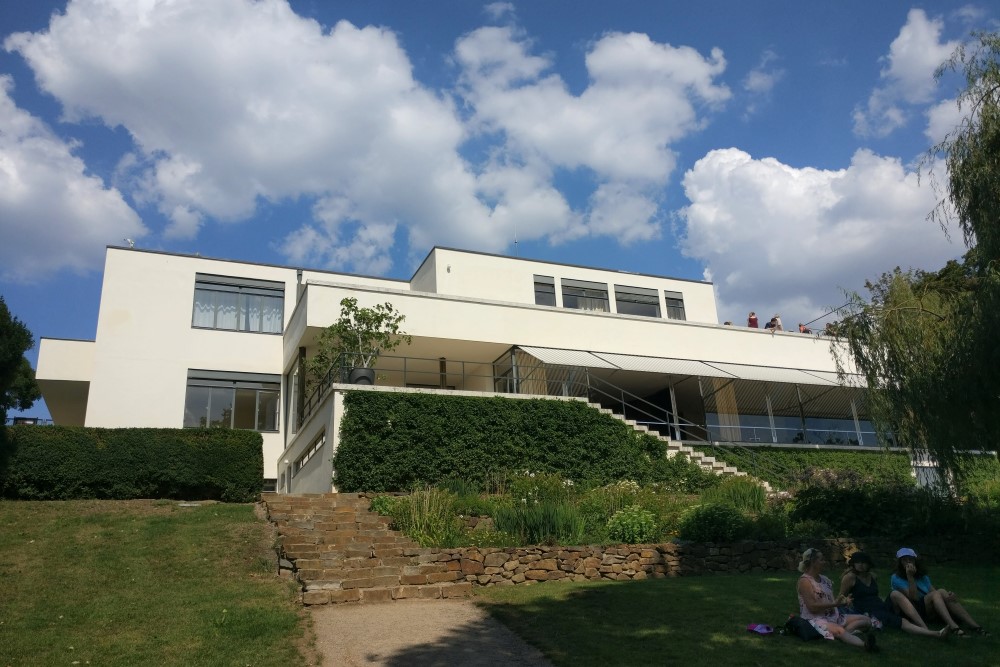
Why is Villa Tugendhat important?
According to its UNESCO listing:
Description is available under license CC-BY-SA IGO 3.0The Tugendhat Villa in Brno, designed by the architect Mies van der Rohe, is an outstanding example of the international style in the modern movement in architecture as it developed in Europe in the 1920s. Its particular value lies in the application of innovative spatial and aesthetic concepts that aim to satisfy new lifestyle needs by taking advantage of the opportunities afforded by modern industrial production.
Visiting Villa Tugendhat
The only way to step inside Villa Tugendhat was on a guided tour. I wasn’t surprised but still dismayed when I checked the website on my way there and found the sole English language tour sold out. I walked through the snow to the house anyway to see if I could get my shoe into the doorway.
I lucked out: a Czech tour was about to begin when I arrived, and the guide said there was space on that. Without a second thought, I bought my ticket on the spot.
Inside Villa Tugendhat Brünn
As it turned out, I got my shoes into the house, but they never came in direct contact with the hallowed floors. At the entrance, all of us had to put our footwear into a device that wrapped them in plastic.
Like Rietveld, Mies gave this house massive windows that take advantage of the location. From the terrace on the street level, which is the top floor, the family and today’s visitors get this view of the old city and castle.
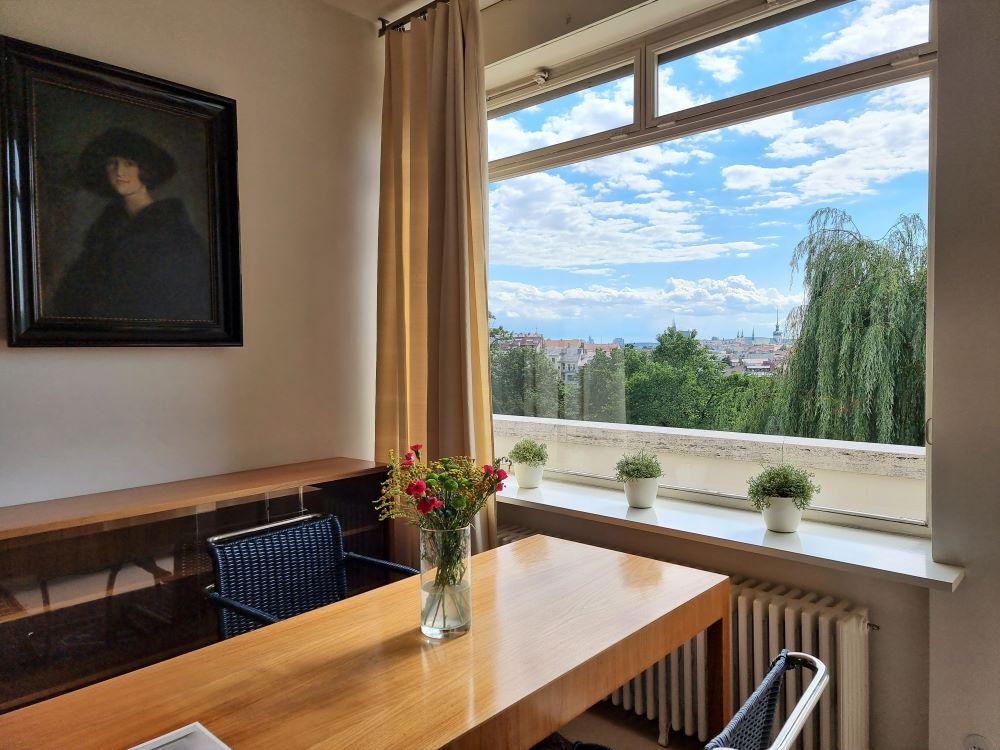
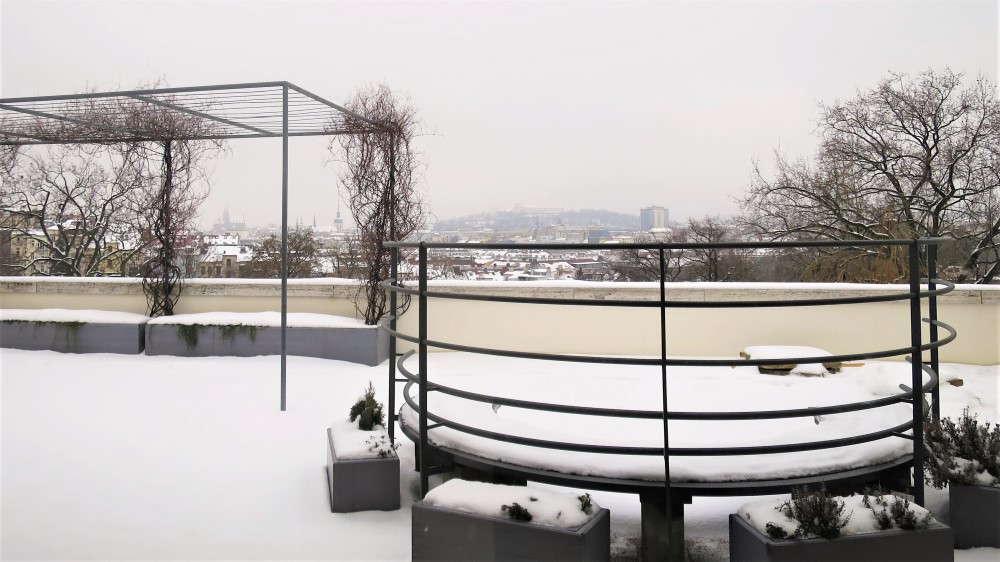
With its clean lines, linoleum and onyx surfaces, the Tugendhat villa in Brno had a polished industrial feel that grew on me. The interior layout is also very practical; for example, this dining table and the wood panels behind it are collapsible.
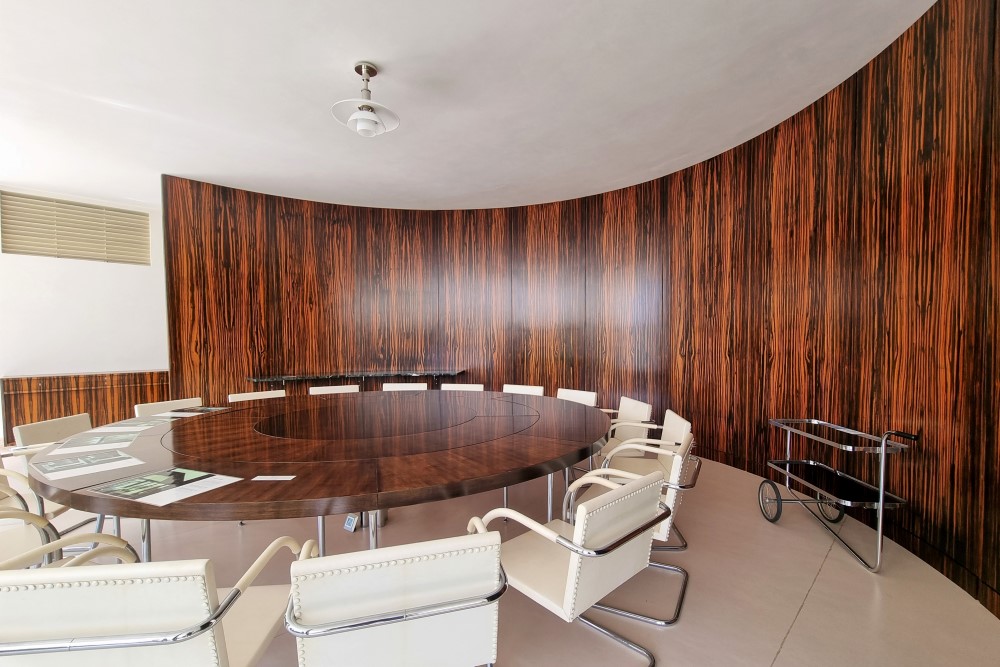
Throughout the tour, the staff were also extremely helpful; they gave me the notes for the English tour, and our guide said I could ask her anything after she explained each room to the Czech visitors.
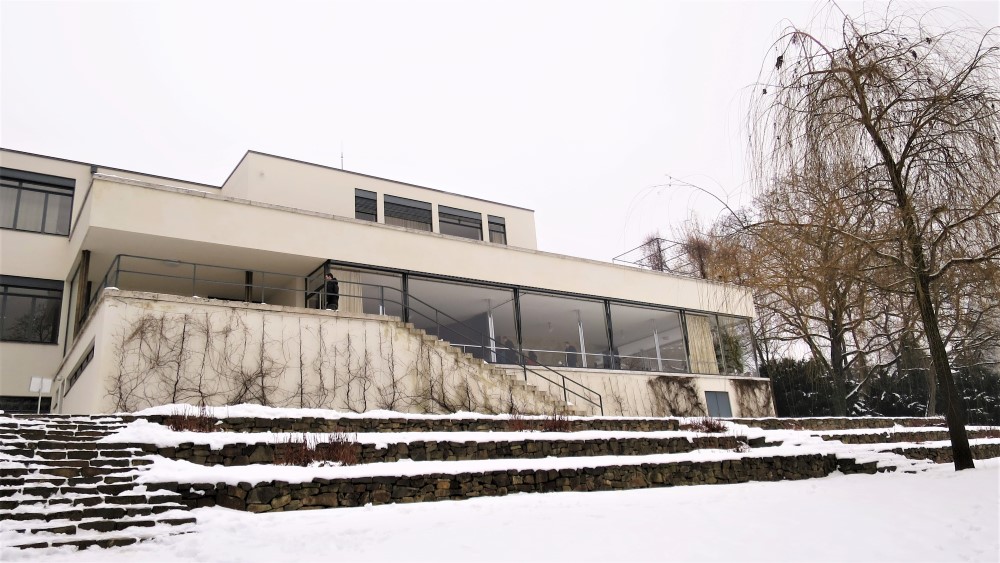
While you are at it, do visit Vila Löw-Beer on the next street (Drobného 22). The Art Nouveau house was once owned by Greta Tugendhat’s father and she and Fritz built their house just uphill of it. It has a café too if you need refreshments. I did not get to visit it, unfortunately.
Tugendhat Villa details
Villa Tugendhat Address
Černopolní 45
61300 Brno, Czechia
Directions to Villa Tugendhat
From the front of the Church of St James, head north along Rasinova. When you reach the corner of the park, turn right and follow the tram lines up the hill along M. Horakove (or take the tram two stops to Detska nemocnice stop). Turn left into the street called Cernopolni and head north until you see Villa Tugendhat’s low cuboid blocks on your left. If you walk all the way, it takes 25 minutes.
Opening hours
Tuesday to Sunday: 10 a.m. to 6 p.m. (last admission at 5.30 p.m.)
Costs (As of August 2023)
The most comprehensive 90-minute tour of Villa Tugendhat, which covers all the floors, the garden and the engineering and housekeeping areas, costs 400 CZK. This goes down to 250 CZK for students up to 26 years of age, teachers accompanying school groups, seniors above 65 and Czech disability card holders.
Shorter and less extensive tours covering only the living areas or the outside costs less, but all have to be booked ahead on the Villa Tugendhat website. Ticket sales for a particular month start on the 1st of the previous month and they sell out very quickly, especially the limited English ones. If you don’t mind doing the full tour in Czech with English notes like I did, look for ROZŠÍŘENÝ OKRUH in the booking engine. That’s my cheat code.
A 50 CZK ticket lets you visit the garden only–this is also available over the counter at Vila Löw-Beer, and free for Brnopas holders.